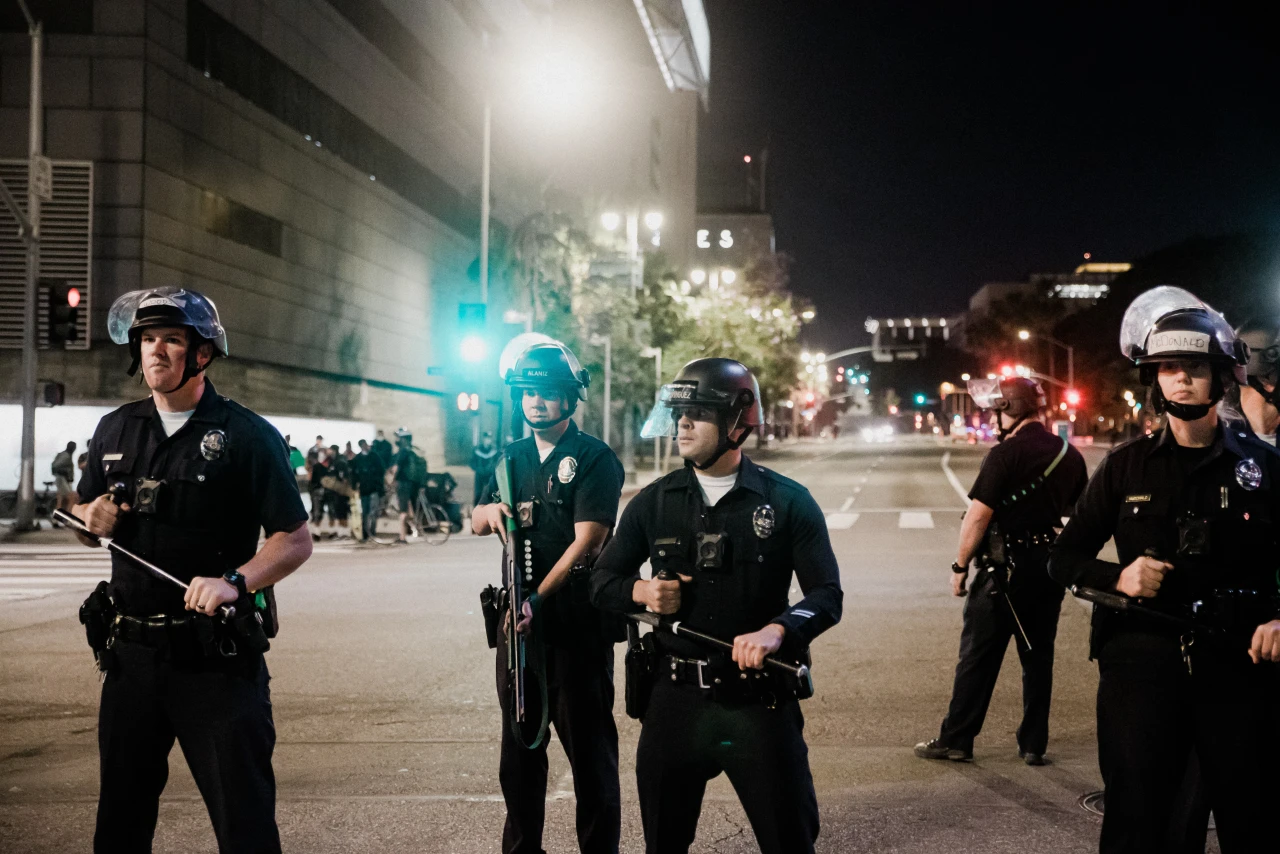Medical examiner testifies: 'No,' there's nothing anyone could have done to save Ahmaud Arbery
The trial for three men—accused of murdering Ahmaud Arbery after spotting him running near a home under construction in their coastal Georgia neighborhood—has entered its eighth day on Tuesday, following a day of factual witnesses called by the state and highly-publicized complaints about Black pastors being allowed in the courtroom.
Those complaints all came from one defense attorney, Kevin Gough, representing William “Roddie” Bryan. Bryan filmed moments of the encounter that ended with Arbery’s death on Feb. 23, 2020. The white Brunswick resident is accused, alongside former cop Gregory McMichael and his son, Travis.
After issuing a half-hearted apology for targeting Black pastors, Gough again voiced similar complaints at the beginning and end of trial proceedings on Monday. At one point, Gough attempted to trigger a mistrial because he was opposed to civil rights icon Rev. Jesse Jackson joining Arbery’s parents in court. Judge Timothy Walmsley refused to entertain such a motion, denying Gough’s request. So hours later—after seeing photographs of shotgun wounds in Arbery’s chest, near his left armpit, and in his right wrist and after hearing from a firearm and tool mark examiner just how close the shotgun used had to be to Arbery—Gough again attempted to press the alleged issue of unfairness his client faced.
Updates will be added as the trial continues. Jump below the fold for more information on the trial to date.
“Your honor, for the record, I had hoped to hear something back from the court after the remarks made this morning,” Gough said. The judge later responded: “I’m confused. What are you waiting for, Mr. Gough?” With that, the attorney said he “was mistaken” and had nothing further. “We’re in recess,” Walmsley said.
YouTube Video
When the trial resumed on Tuesday, attorneys got into the legal weeds, with prosecutor Linda Dunikoski saying she had only today received 68 police reports the defense provided to establish a “high volume of suspicious person calls in this neighborhood and a lot of extra patrolling.”
Dunikoski said the reports are irrelevant unless someone in the case knew about them at the time of the incident. She also argued that it’s improper to present that number of reports, and that if the defense intended to introduce the calls as evidence, she wanted to go through each one.
Gough was somehow able to make the dispute about him> He argued that, while he adopted the co-defendant’s position, “we sometimes feel like the red-headed stepchild sitting over there in the corner. We tend not to get served things from co-defendants.”
It wasn’t the only complaint Gough raised on Tuesday. He yet again attempted unsuccessfully to sway the judge on banning Black pastors from attending the trial, or as Gough put it: “To prohibit any further conduct that may intimidate or influence jurors or otherwise interfere with a fair trial.” The judge responded with a 10-minute recess.
When the court resumed trial, medical examiner Dr. Edmund Donoghue testified to Arbery’s cause of death being multiple gunshot wounds. He explained to the jury several graphic photos of the wounds Arbery sustained. The doctor described abrasions on Arbery’s face caused by an unguarded fall—a fall in which a person is unable to put their arms out to catch themselves.
One of the photos showed a gunshot wound Arbery sustained in his left shoulder. Donoghue testified that he did not believe anything could have saved Arbery’s life following that single shot.
The doctor described Arbery suffering a distinct condition known as Erb’s Palsy, a paralysis of the left arm, after that shot. A still image from video showed his shirt “ballooning out” as shotgun pellets left his body, local journalist Veronica Waters reported on Twitter of the testimony.
Another person documenting the trial live who goes by @MythSerene tweeted: “As promised in her opening, Dunikoski just showed the jury the soles of Ahmaud’s running shoes, which she said were worn down from running. Again, just seeing Donoghue looking at the screen as Dunikoski says, ‘State’s 31, what do we have here?’ & answering.”
At one point, the court stopped showing the public the graphic photos of Arbery’s wounds. Donoghue just described them.
The state also asked Donoghue about a difference of opinion he had from Brian Leppard, a firearm and tool mark examiner with the GBI who testified on Tuesday. They differed on muzzle-to-target distance, the length between the muzzle of a firearm and the target. Once Donoghue learned of the difference, he watched video of the encounter and learned of a muzzle to target distance that was 20 inches to 3 inches.
Donoghue also said the order of shots and wounds could be consistent with someone pushing or grabbing the shotgun.
When Dunikoski asked was there anything that could’ve been done on scene to save Arbery’s life, the doctor said, “No.” The prosecutor stood with a brown evidence bag containing Arbery’s tennis shoes, which the defense objected to on grounds of relevance. The judge excused the jury momentarily to resolve the dispute, and Dunikoski explained her intent to introduce the shoes as running shoes. She later withdrew her tender after the defense argued it was a roundabout way of arguing Arbery was jogging in the neighborhood. The defense has repeatedly tried to present an alternative reason to why Arbery was running just before he was killed, suggesting that it was because he was on probation, but the judge has not allowed it, saying Arbery is not on trial.
RELATED: Watch what happens when defense attorney seeks mistrial in Arbery case
RELATED: Defense attorney sees Al Sharpton in court and allows racism to slip out

